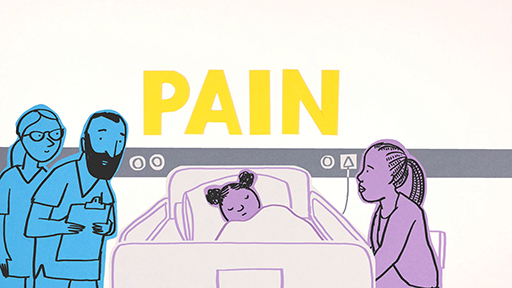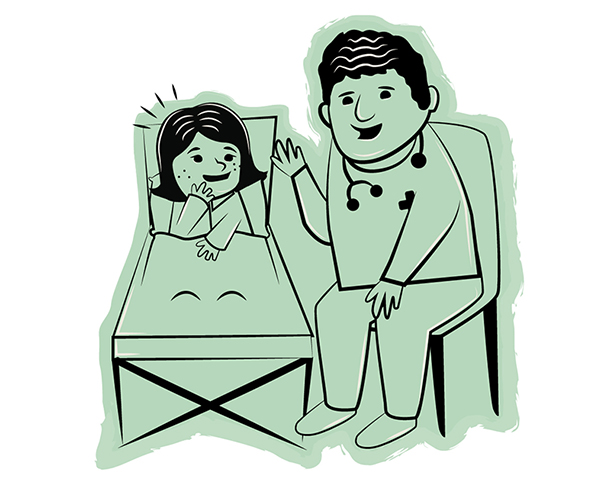4 Bringing everyone’s views together
In this final section of the course, you will focus on bringing the views of nurses and parents/carers together and create actions for each to take to help build trust and improve the management of a child’s pain whilst in hospital.
Based on parent and nurse feedback (Simons et al., 2024; Simons and Plowright Pepper, 2024) the following are suggested as actions to take:
Nurses should:
- start the day by giving the parent/carer their name
- identify pain management at the start of a shift as a priority
- provide parents/carers with information about how their child’s pain will be managed
- give information to parents/carers gradually to help them take it in
- assess the child’s pain level regularly.
Parents/carers should:
- approach any nurse for help when their child is in pain and not necessarily their child’s assigned nurse who may be unavailable
- build up a relationship with the nurse looking after their child, go to the nurse at any time if they have a concern and not wait if their child is in pain
- ask questions and know that they ‘are not being a nuisance’ and ‘there are no silly questions’
- trust the nurses and doctors to help when their child has pain.
For parents/carers, parent/carer empowerment is strongly dependent on the relationship the parent/carer has with the nurse. Having parents/carers and nurses work together as a team is in the best interests of the child in pain.
Activity 4 PAIN mnemonic
Watch this short animation for nurses and answer the following questions:
- How useful is the PAIN mnemonic for nurses to help improve the management of children’s pain in hospital?
- If you were given responsibility for sharing it with parents/carers, what method would you use and why?
- What difference would each of the four sections of the mnemonic (PAIN) make to parents/carers?

Transcript: Animation 3
[MUSIC PLAYING]
[MUSIC PLAYING]
[TEXT ON SCREEN: Pain. Analgesia. Introduction. Needing help.]
Discussion
Many studies have found a longstanding problem in how nurses and parents/carers communicate in relation to children’s pain. By consciously working together to communicate better, by nurses being proactive in their communication about pain, and by parents/carers feeling more confident in approaching a nurse when their child is in pain, there is a greater likelihood of preventing children in hospital experiencing unnecessary pain.

